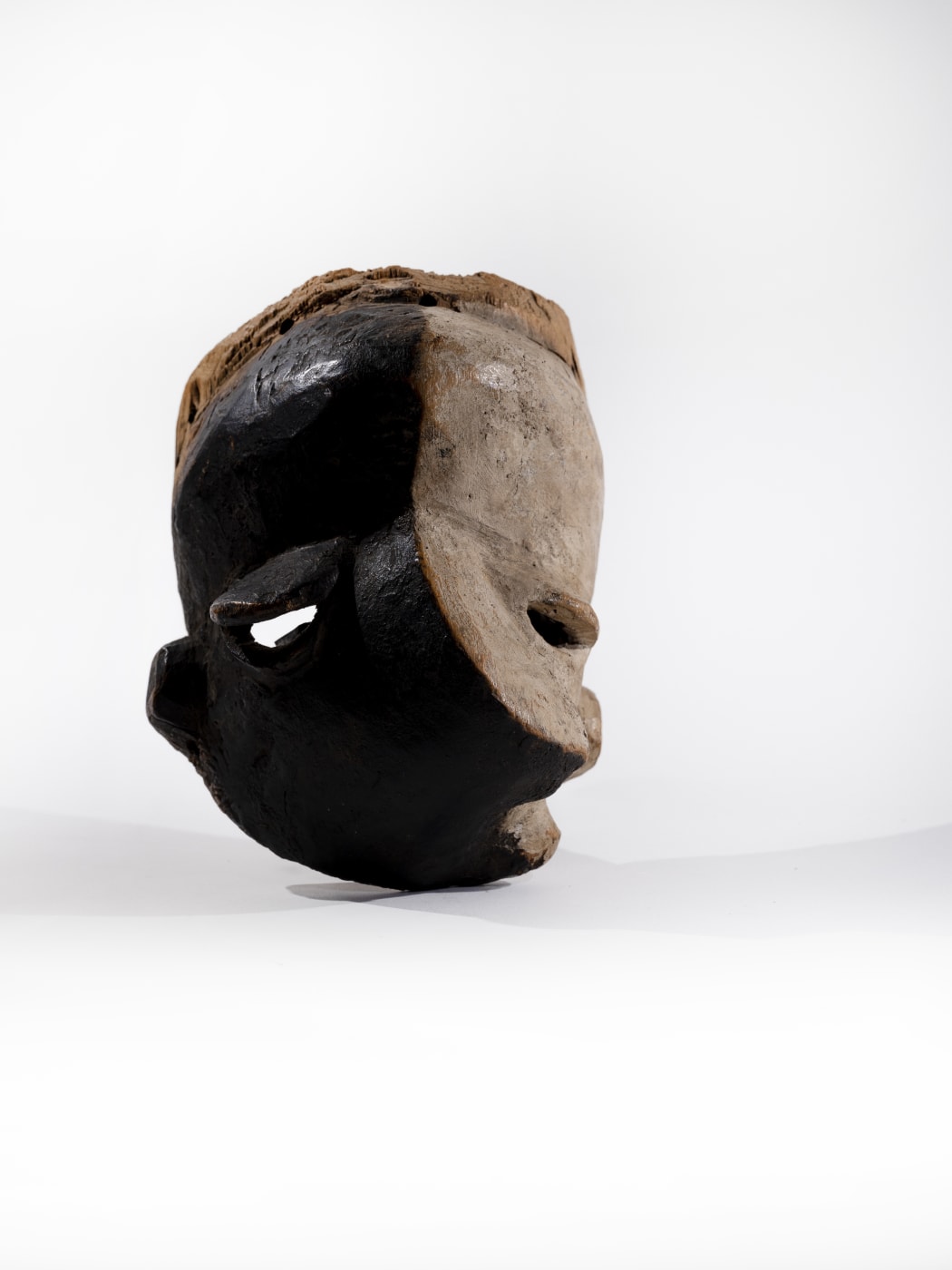
One of the key works in Unsettled is a recently rediscovered Pende sickness mask from D.R. Congo. Never published or exhibited before, this exceptional mask has been a big favorite among visitors of the show. Both connoisseurs as new collectors have been stunned by its quality, age and patina. Although we do work with an excellent photographer, pictures of this mask just don't do it justice - so I hope you have the possibility to come discover it in Antwerp. Do note it is already the last weekend of the exhibition!
The mask (known locally as Mbangu) represents a face distorted by a paralysis of the facial nerve. The black-and-white division of the mask's face evokes the scars of someone who fell into the fire during an epileptic attack. Indeed, scientists have demonstrated that the flickering flames of night-time campfires are proven triggers for seizures. However, the scars associated with epilepsy are only one of its symptoms. As you can see on the below field-photo, the masked performer would also wear a humpback. The multiplication of complaints indicated that Mbangu did not represent just one illness. Instead, the sculptor and performer collaborated to make Mbangu a composite sign for illness and disability, of all the misfortunes that might befall someone.
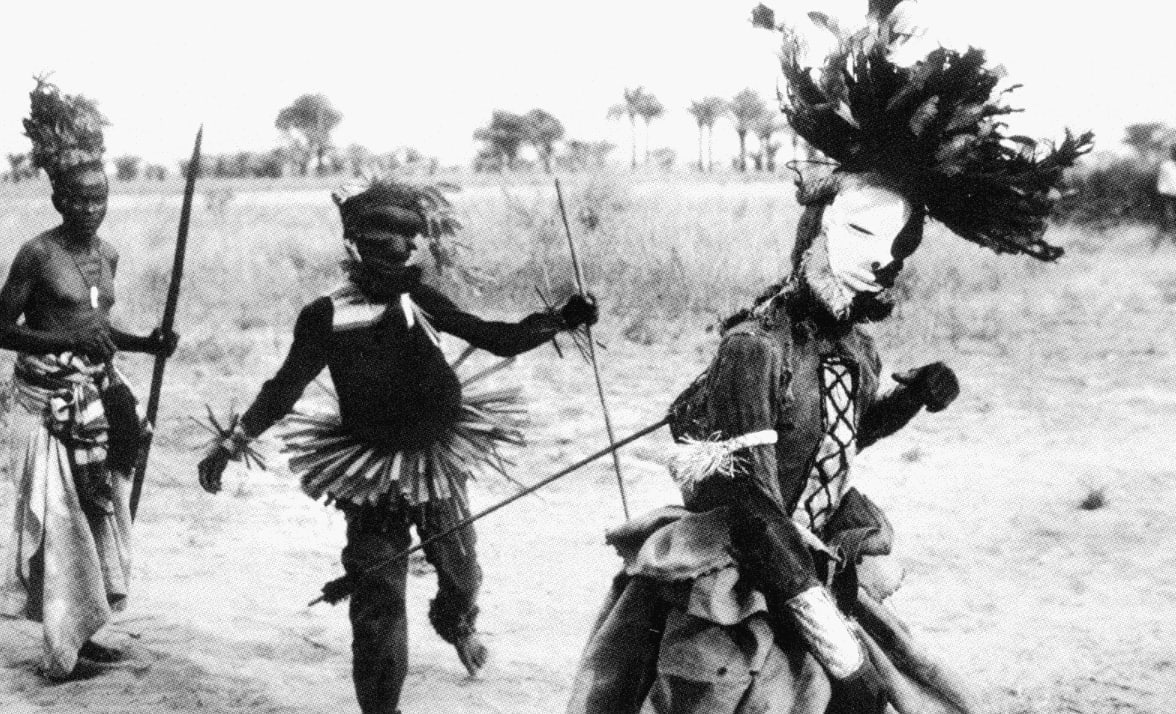
Pende mbangu masquerade. Note the arrow piercing the masker's humpback. (Photo by Zoe S. Strother, 1989. Published in Strother (Zoë S.), "Pende", Milan, 5 Continents, 2008:52, fig. 9.
The black-and-white coloration deserves further comment. Color symbolism in Pende masks is usually positional. While white can have several meanings, the most common one comes through its association with the white kaolin clay used in healing rites. On the other hand, black is the color of sorcery and illness. Therefore, the bicoloration may have had a secondary meaning in situating Mbangu at the crossroads between healing and illness. From its profile views, the mask seems either completely black or white - an accidental reference to the eastern yin-yang symbol - in line with the masks' universal appeal.
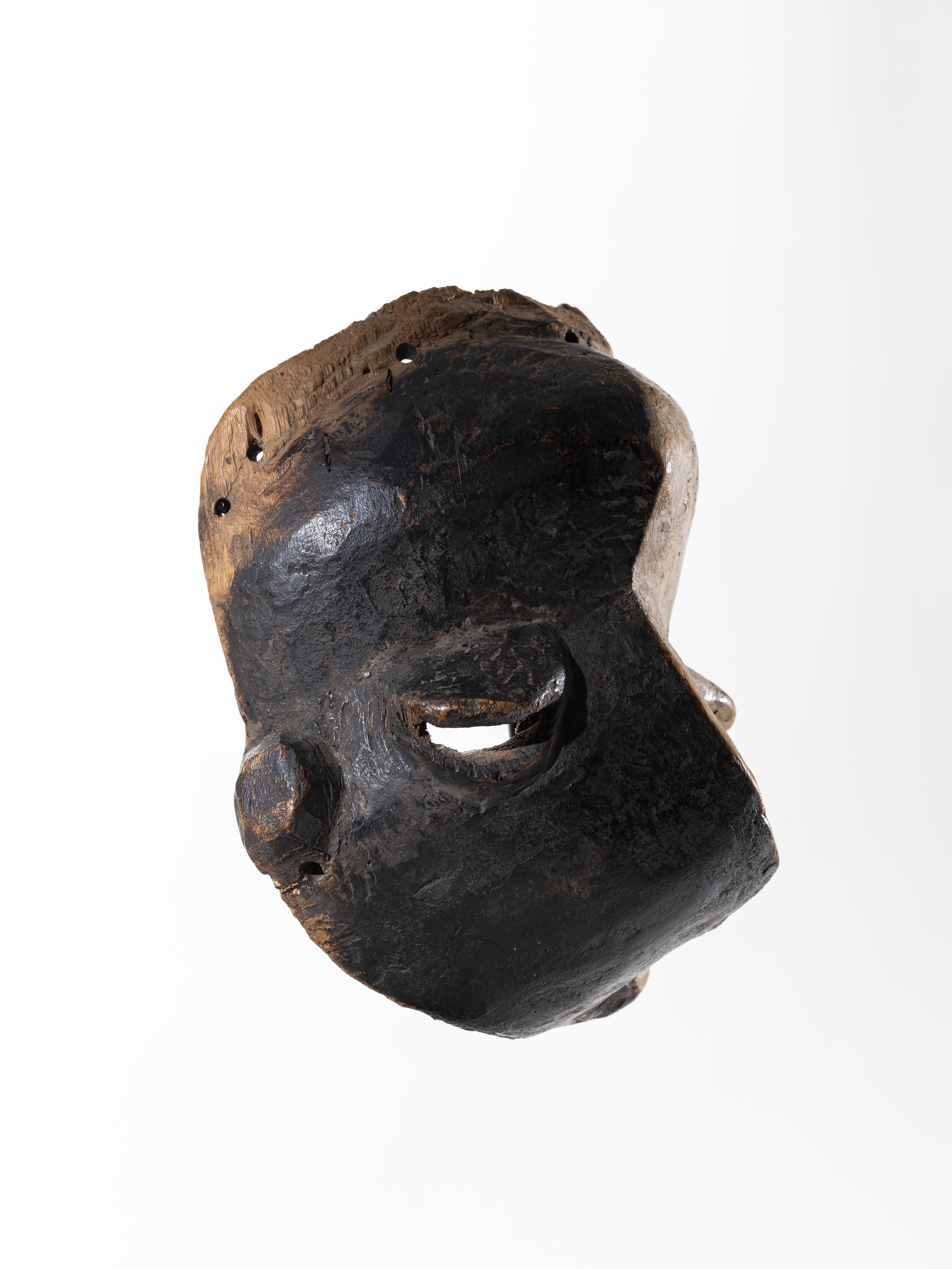
In line with Pende physiognomic theory, Mbangu displays several masculine features: the assertive forward-projecting forehead, the well-articulated cheekbones, and the downcast projecting eyes. Facing the challenge of chronic disability, Mbangu is also facing the challenge of bitterness and envy. The artist has gone far beyond the naturalistic representation of a physical complaint to comment on the toll of chronic illness on the psyche. This mask conveys an extraordinary delicacy by contrasting the gentle perfection of the features with their systematic distortion. The sculptor responds to the widespread version of Mbangu’s song: ‘Do not mock your neighbour, do not laugh at your brother. The sorcerers have bewitched him’. In other words, anyone may fall prey to misfortune. It could happen to you.

If you would wish to learn more about these masks I highly recommend Zoé Strother's book “Pende”, (Milan, 2008).
If you thought this mask looked familiar, it might be because you recall its deformed face from the head of one of the women displayed on Picasso's masterpiece 'Les Demoiselles d'Avignon' (1907). Indeed the artist became heavily influenced by African masks during the painting of this seminal work.
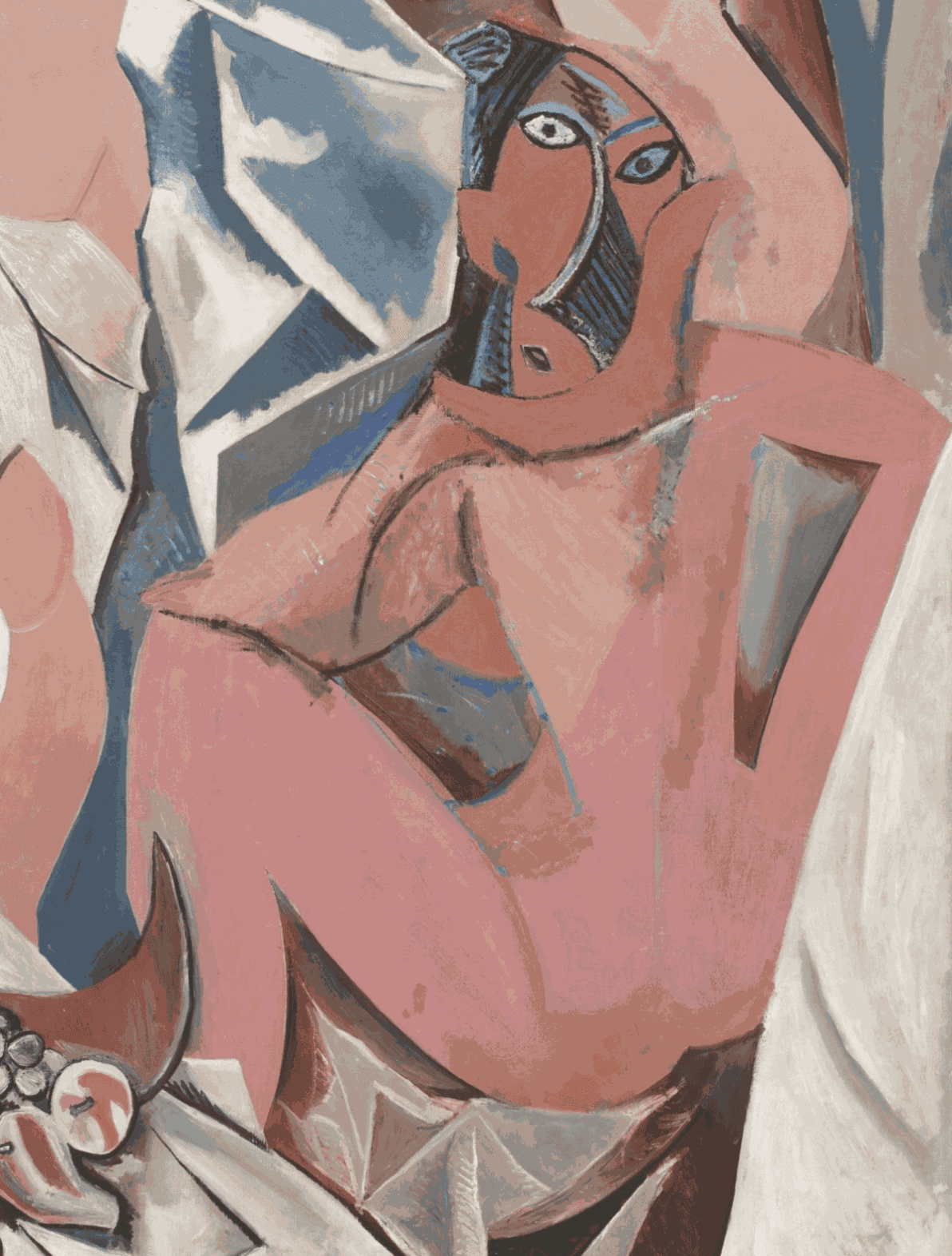
Detail of 'Les Demoiselles d'Avignon' by Pablo Picasso (1907).
As Duende Art Projects is all about presenting clever juxtapositions between classical and contemporary African Art, UNSETTLED includes two works from the series “Le Demoiselle Pende/Masque Bi-face” by the Congolese artist Aimé Mpane. These carved sculptures resemble Pende sickness masks while also referencing Pablo Picasso’s 1907 painting - click on the below image to learn more about them!
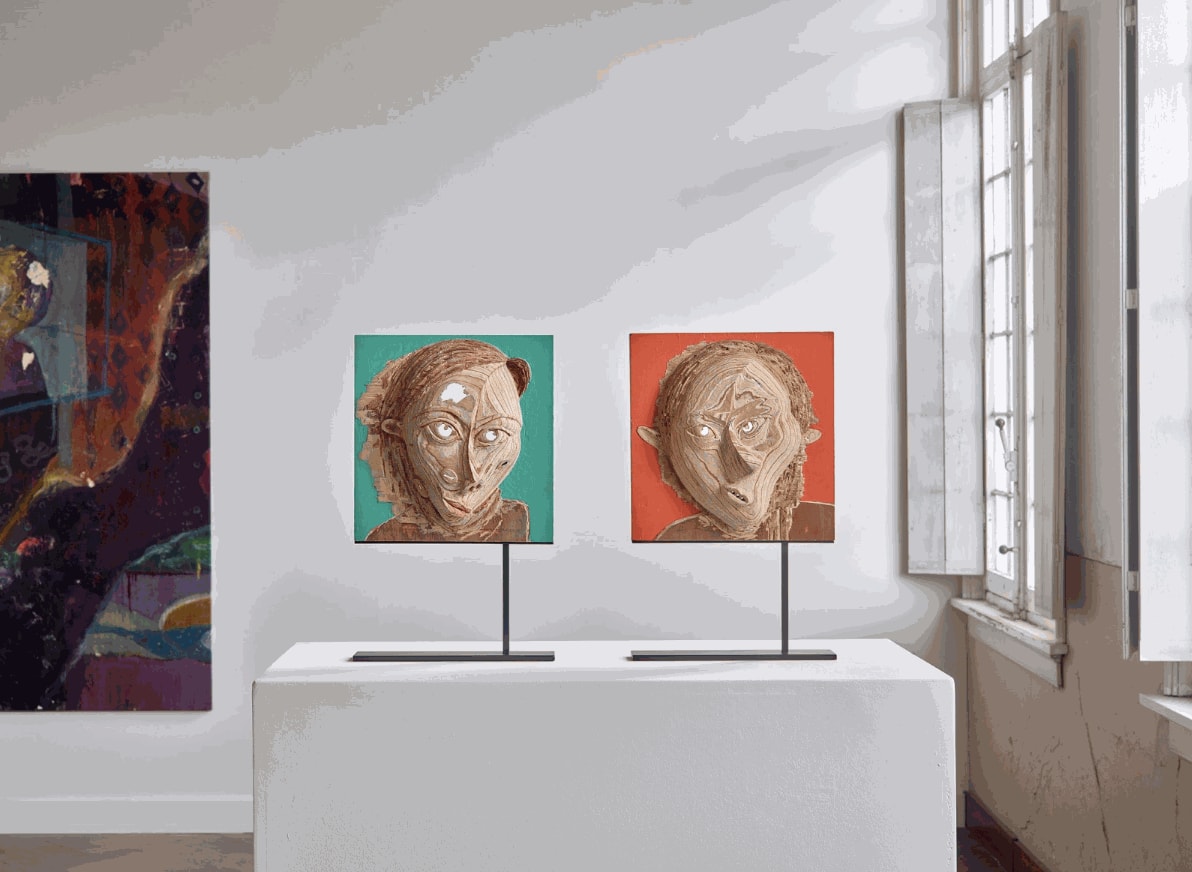
Two-Sided Mask, Lady Picasso - Menso, Aimé Mpane (2018). Installation view UNSETTLED.